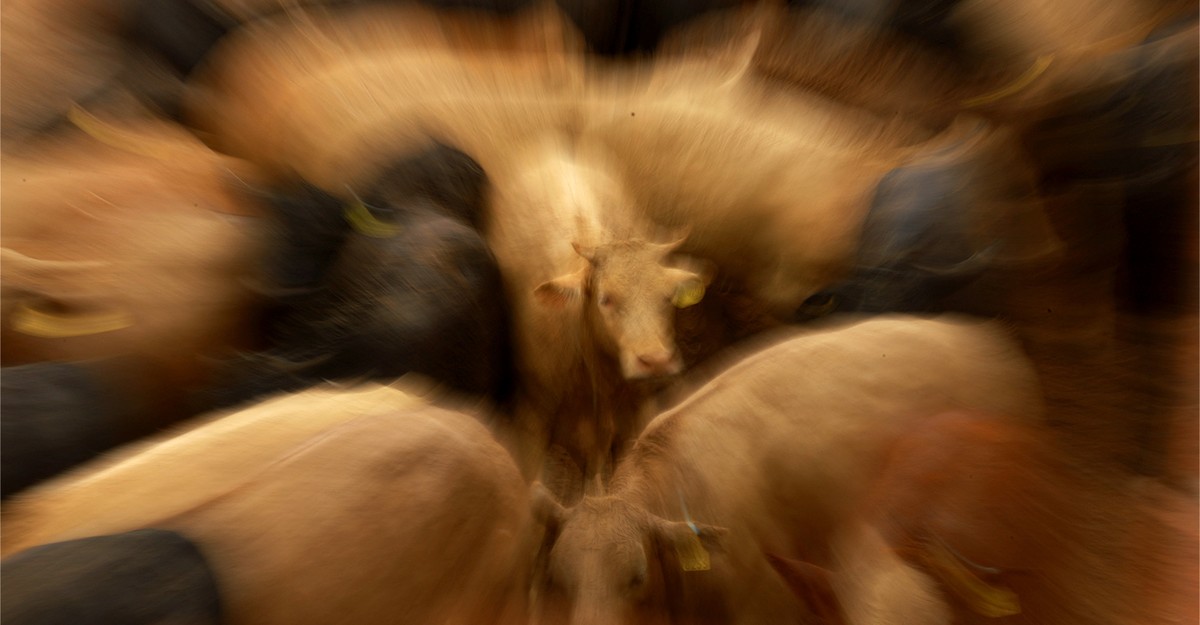Controlling The Screwworm: Challenges And Solutions For A Dangerous Pest

Welcome to your ultimate source for breaking news, trending updates, and in-depth stories from around the world. Whether it's politics, technology, entertainment, sports, or lifestyle, we bring you real-time updates that keep you informed and ahead of the curve.
Our team works tirelessly to ensure you never miss a moment. From the latest developments in global events to the most talked-about topics on social media, our news platform is designed to deliver accurate and timely information, all in one place.
Stay in the know and join thousands of readers who trust us for reliable, up-to-date content. Explore our expertly curated articles and dive deeper into the stories that matter to you. Visit Best Website now and be part of the conversation. Don't miss out on the headlines that shape our world!
Table of Contents
Controlling the Screwworm: Challenges and Solutions for a Dangerous Pest
The screwworm, a parasitic fly larva capable of inflicting devastating wounds on livestock and even humans, remains a significant agricultural and public health challenge globally. Its voracious appetite and rapid reproductive cycle make controlling screwworm infestations a complex and ongoing battle requiring innovative solutions and persistent effort. This article explores the challenges posed by this dangerous pest and the strategies employed to mitigate its impact.
The Devastating Impact of Screwworm Infestations
Screwworm infestations, primarily caused by Cochliomyia hominivorax (New World screwworm) and Chrysomya bezziana (Old World screwworm), lead to significant economic losses in livestock farming. These parasitic larvae burrow into the flesh of warm-blooded animals, causing excruciating pain, extensive tissue damage, and even death if left untreated. The resulting wounds require costly veterinary care, impacting farmers' livelihoods and the global meat supply. Beyond livestock, screwworm infestations can affect wildlife populations and, in rare cases, humans, particularly in regions with limited access to healthcare.
The economic impact is substantial. According to the USDA, screwworm eradication programs have saved billions of dollars in livestock losses. However, the threat remains, particularly in areas where eradication efforts have faltered or new infestations occur.
Challenges in Screwworm Control
Effective screwworm control faces several significant hurdles:
- Rapid Reproduction: Screwworm flies reproduce incredibly quickly, laying hundreds of eggs at a time. This rapid lifecycle makes containment difficult.
- Wide Geographic Range: Screwworm species have a broad geographic distribution, making comprehensive eradication campaigns challenging and resource-intensive.
- Resistance to Insecticides: The development of insecticide resistance in some screwworm populations necessitates the exploration of alternative control methods.
- Difficult to Detect Early Infestations: Early detection is crucial for effective control. However, infestations can often go unnoticed until significant damage has already occurred.
- Access to Remote Areas: Implementing control strategies in remote or inaccessible areas presents significant logistical challenges.
Strategies for Screwworm Control: A Multifaceted Approach
Controlling screwworm populations requires a multi-pronged approach that combines various methods:
- Sterile Insect Technique (SIT): This method involves mass-rearing male screwworm flies, sterilizing them through irradiation, and releasing them into the wild. These sterile males compete with wild males for mating, resulting in a decline in the overall screwworm population. SIT has been remarkably successful in eradicating screwworm populations in several regions, including the southern United States and parts of Central America. [Link to an article about SIT success]
- Insecticides: While insecticide resistance is a concern, judicious use of appropriate insecticides, especially in conjunction with other control methods, can help manage infestations.
- Surgical Treatment: Prompt surgical removal of screwworm larvae is crucial for treating infested animals and preventing further damage. Early intervention is key.
- Improved Animal Husbandry: Good animal husbandry practices, including regular wound care and prompt treatment of injuries, can significantly reduce the risk of screwworm infestations.
- Community Engagement: Successful screwworm control relies on the active participation of communities, particularly in rural areas. Education and awareness campaigns are essential. [Link to an example of community engagement program]
- Monitoring and Surveillance: Continuous monitoring and surveillance are vital for early detection of outbreaks and rapid response.
The Future of Screwworm Control: Research and Innovation
Ongoing research continues to explore innovative approaches to screwworm control, including:
- Development of new insecticides: Scientists are actively researching new insecticides and alternative control methods to address insecticide resistance.
- Genetic modification: Genetic modification techniques are being explored as potential tools for controlling screwworm populations.
- Improved diagnostic tools: Developing more effective diagnostic tools will facilitate early detection and enable timely interventions.
The fight against the screwworm is a testament to the importance of persistent research, international collaboration, and community involvement. While challenges remain, the development and application of innovative control methods offer hope for reducing the devastating impact of this dangerous pest on livestock, wildlife, and human health. Continued investment in research and effective implementation of current strategies are essential for maintaining progress and securing a future with fewer screwworm infestations.

Thank you for visiting our website, your trusted source for the latest updates and in-depth coverage on Controlling The Screwworm: Challenges And Solutions For A Dangerous Pest. We're committed to keeping you informed with timely and accurate information to meet your curiosity and needs.
If you have any questions, suggestions, or feedback, we'd love to hear from you. Your insights are valuable to us and help us improve to serve you better. Feel free to reach out through our contact page.
Don't forget to bookmark our website and check back regularly for the latest headlines and trending topics. See you next time, and thank you for being part of our growing community!
Featured Posts
-
 Roland Garros Rocha E Borges Alcancam Feito Sem Precedentes
May 29, 2025
Roland Garros Rocha E Borges Alcancam Feito Sem Precedentes
May 29, 2025 -
 Ellen De Generes Daytime Tv Run Rise Fall And The Reasons For Cancellation
May 29, 2025
Ellen De Generes Daytime Tv Run Rise Fall And The Reasons For Cancellation
May 29, 2025 -
 Thames Valley Crash Leaves Police Officer Injured Driver Charged
May 29, 2025
Thames Valley Crash Leaves Police Officer Injured Driver Charged
May 29, 2025 -
 Explosive Testimony In Diddy Trial Ex Employee Claims Death Threat Against Kid Cudi
May 29, 2025
Explosive Testimony In Diddy Trial Ex Employee Claims Death Threat Against Kid Cudi
May 29, 2025 -
 Liverpools Victory Parade Unraveling The Incident Details
May 29, 2025
Liverpools Victory Parade Unraveling The Incident Details
May 29, 2025
Latest Posts
-
 House Of The Dragon Season 2 Emmy Awards Deliver A Major Shock
Jul 17, 2025
House Of The Dragon Season 2 Emmy Awards Deliver A Major Shock
Jul 17, 2025 -
 2025 Mifel Open In Depth Preview Of Walton Vs Pacheco Mendez
Jul 17, 2025
2025 Mifel Open In Depth Preview Of Walton Vs Pacheco Mendez
Jul 17, 2025 -
 Los Cabos Open 2025 Rublev And Davidovich Poised For Championship Showdown
Jul 17, 2025
Los Cabos Open 2025 Rublev And Davidovich Poised For Championship Showdown
Jul 17, 2025 -
 Next Gen Atp Basavareddy Secures Los Cabos Title Alvarez Progresses
Jul 17, 2025
Next Gen Atp Basavareddy Secures Los Cabos Title Alvarez Progresses
Jul 17, 2025 -
 Exclusive Amaya And Bryan On Their Future After Love Island Usa
Jul 17, 2025
Exclusive Amaya And Bryan On Their Future After Love Island Usa
Jul 17, 2025
